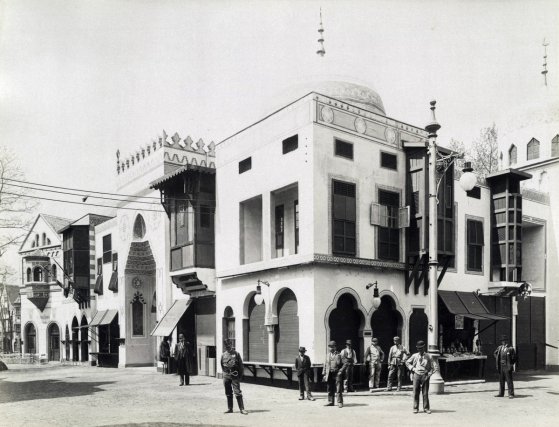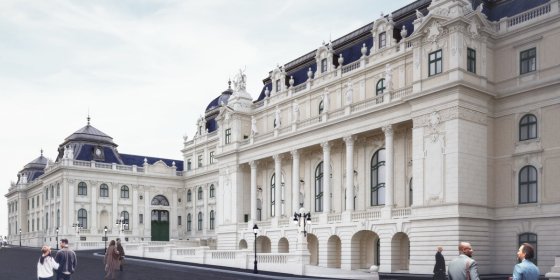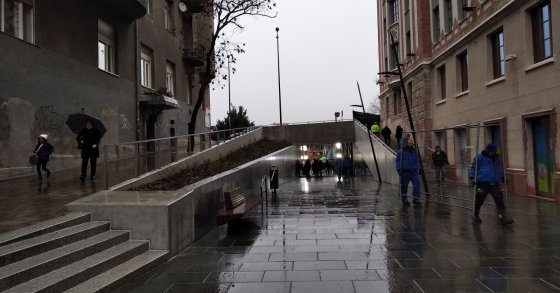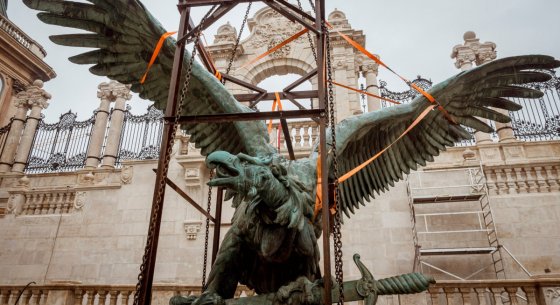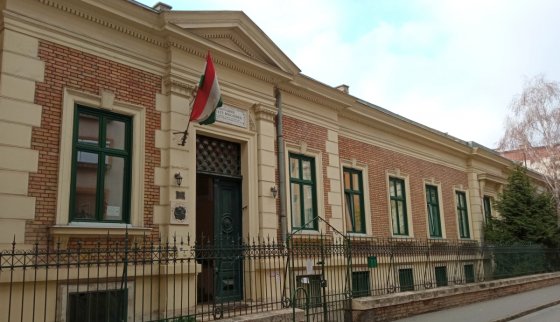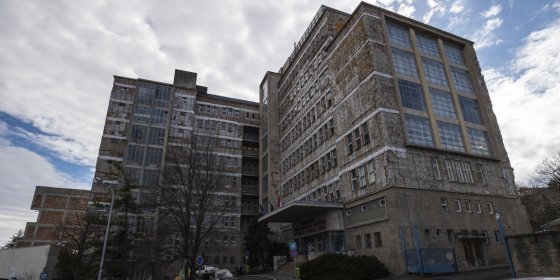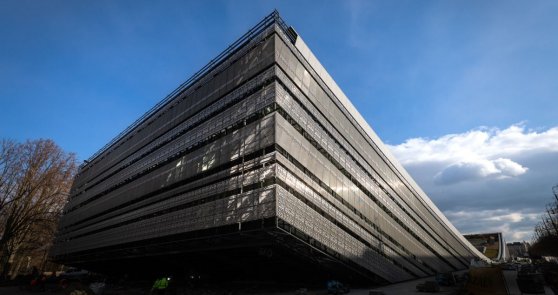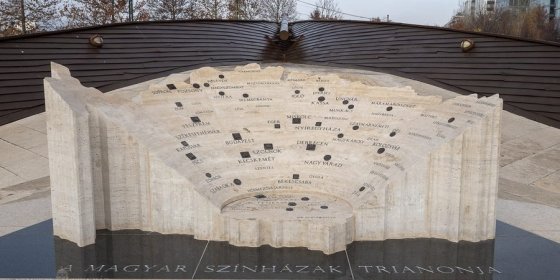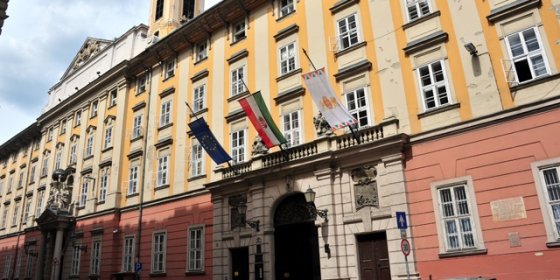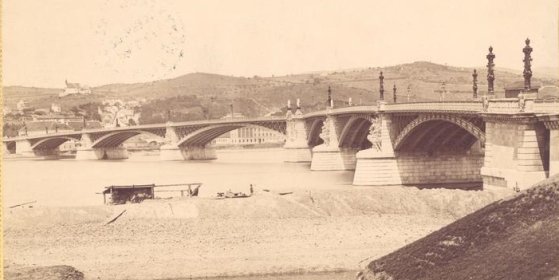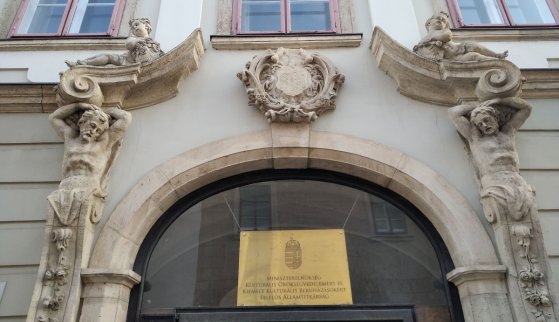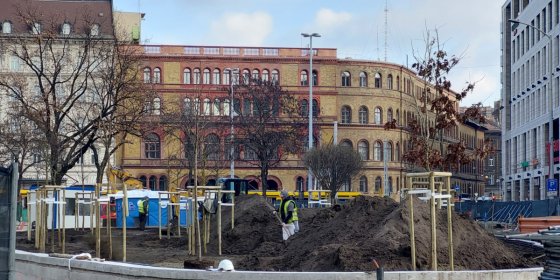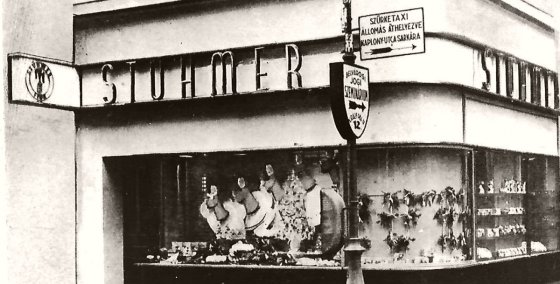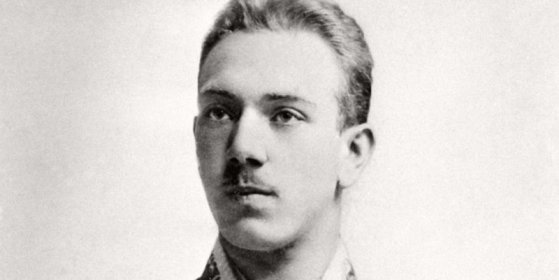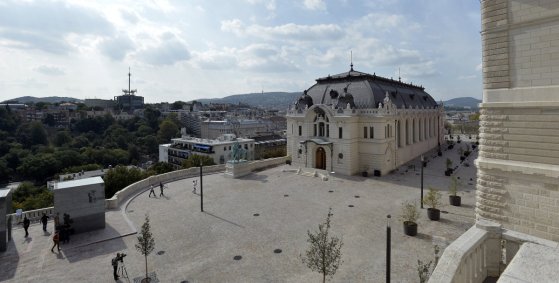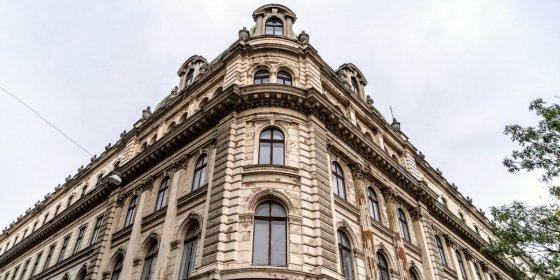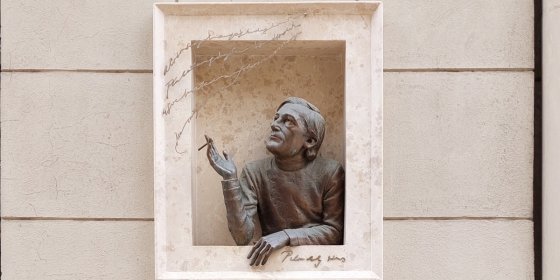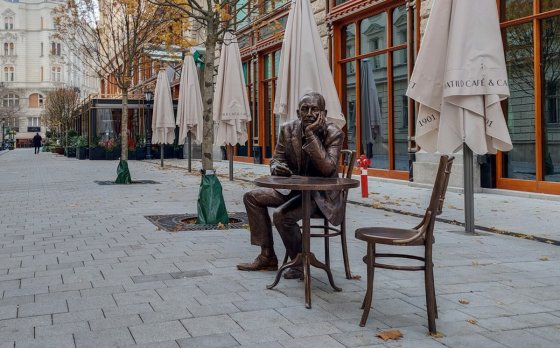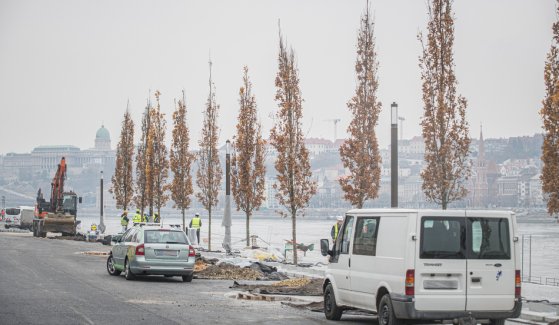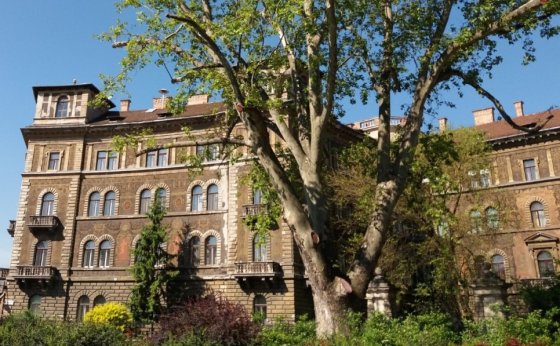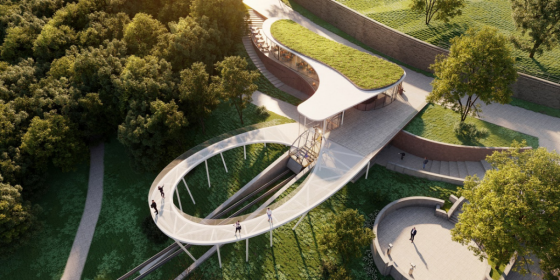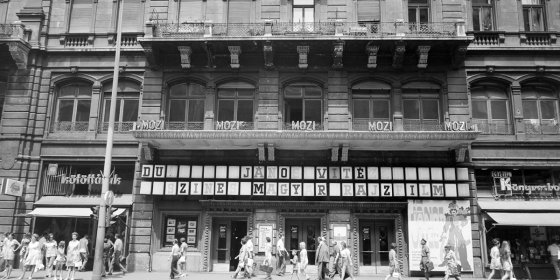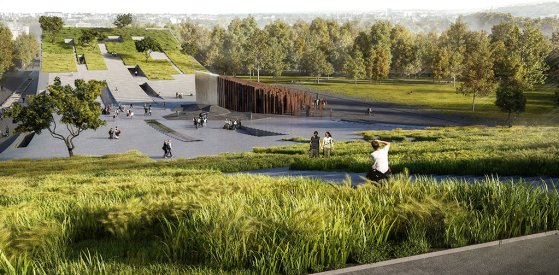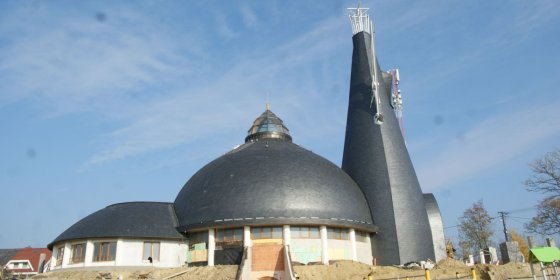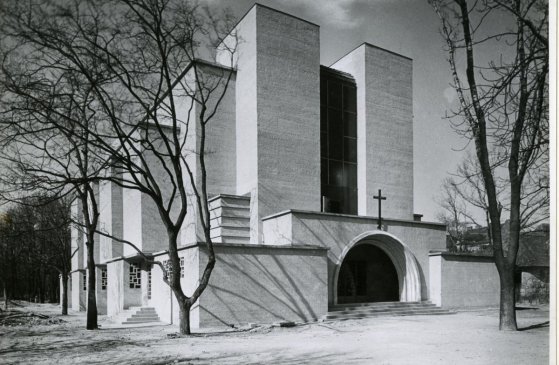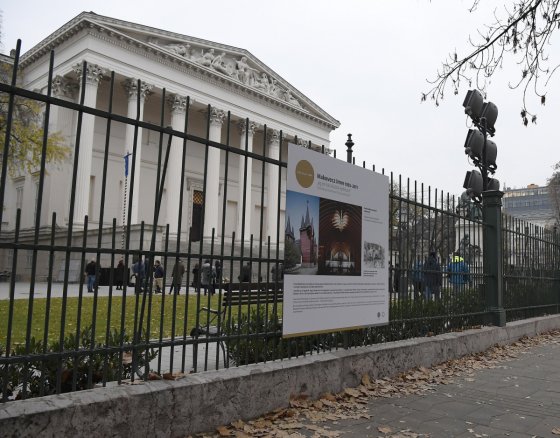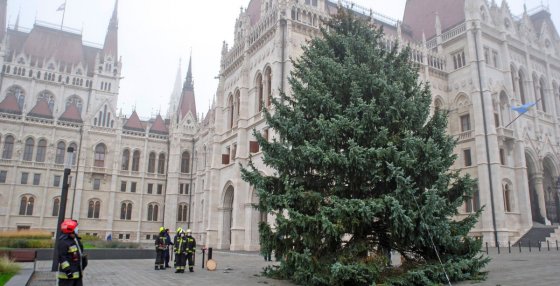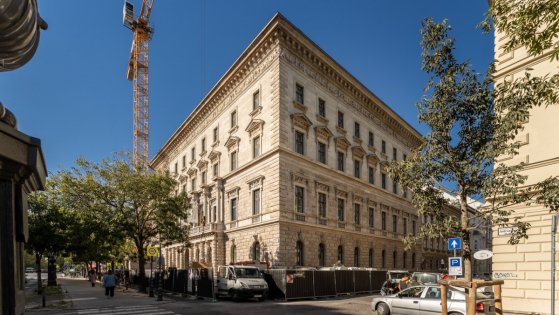 The „intertwined history” of the bridges and the city of Budapest
Which ideas and events have shaped the fate of bridges of Budapest and the cityscape? Alongside many other interesting facts, this question is also answered this newly published book by the Budapest City Archives, which introduces the history of bridges in Budapest.
The „intertwined history” of the bridges and the city of Budapest
Which ideas and events have shaped the fate of bridges of Budapest and the cityscape? Alongside many other interesting facts, this question is also answered this newly published book by the Budapest City Archives, which introduces the history of bridges in Budapest.
pestbuda.hu
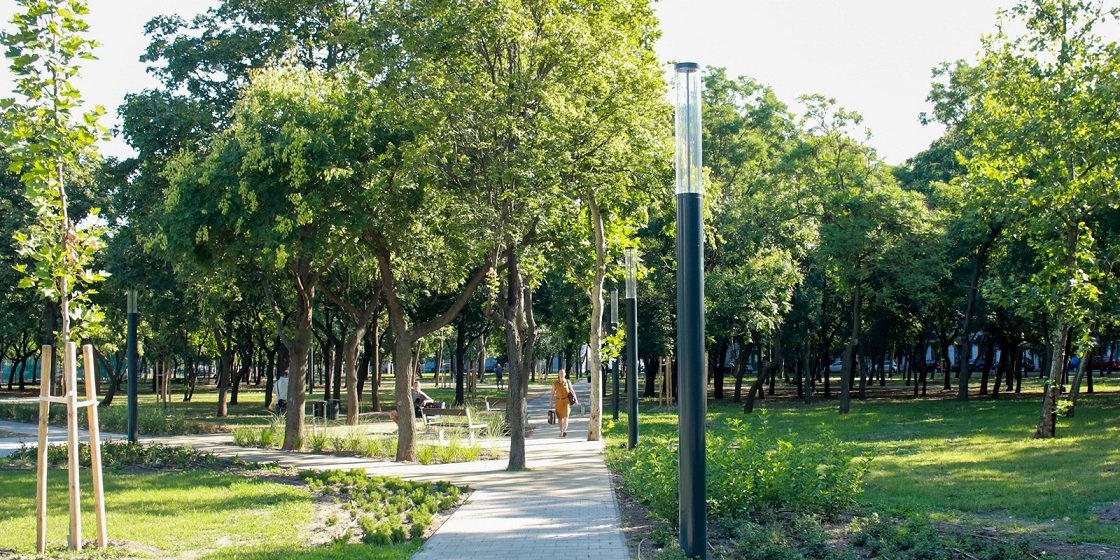 A new sports park will be established in Zugló
A new sports park will be established in Zugló
December 4, 2021 at 2:00 PM
The people living in Zugló received a promise years ago about a sports park to be established in the Butterfly Park. The construction was given the green light at the local council board meeting. The sports facility will have a floor area of at least 150 square meters and will accommodate a minimum of 15 sports equipment.
Fabulous East in Budapest at the turn of the century - Turkish architecture and places of amusement
December 4, 2021 at 9:30 AM
The thousandth anniversary of the Hungarian conquest of the Carpathian Basin provided the basis for the creation of many famous works of art and buildings, as a nation proud of its past lived in an economic heyday. However, the memories of high culture were only a slice of the diverse entertainment industry at the time, and the wider audience also longed for lighter entertainment, which was served by a number of places of amusement. It is interesting how similar they were in some respects.
Here are the first visual plans for the restoration of the Buda Castle
December 3, 2021 at 1:30 PM
A detailed technical, architectural, artistic and functional survey of the Buda Castle has been completed, thanks to which the experts now know exactly the transformations after the Second World War. At the same time, planning for the complete restoration of the building complex began. The first visual designs have now been completed, led by Robert Gutowski.
The last stop of a renovation program: the handover of the Széll Kálmán Square gateway
December 3, 2021 at 8:00 AM
Széll Kálmán Square has undergone huge changes in recent years and although we have become accustomed to the modern environment, the renovation program actually ended only on Thursday: the gateway connecting the square with Krisztina Boulevard was handed over. The passage was short, but the construction was all the more complicated. Still, it was worth it, as it is another, very big step towards an accessible Budapest.
The renovated Turul statue in the Buda Castle was restored to its original location
December 2, 2021 at 5:00 PM
The Turul statue of the sculptor Gyula Donáth was restored to its original location next to the Habsburg Gate in the Buda Castle. The beautified work was placed on its pedestal using a 60-ton giant crane. Specialists performed patina-preserving cleaning and restoration on the work of art, repairing the surface with bronze welding. The inner frame of the statue was also reinforced.
The most beautiful nursery in Pest was designed by Miklós Ybl
December 2, 2021 at 2:00 PM
At the corner of the Nagy templom and Nap Street in Józsefváros is a beautiful house made in the Neo-Renaissance style. It is already important because of its designer, Miklós Ybl, but the client, the First Pest Nursery Association, also makes the building - still operating in education - special.
Renovation of the former Kútvölgyi street hospital building has begun
December 2, 2021 at 1:00 PM
The tower building of the Kútvölgy block of the New St. John's Hospital and Clinic will be renovated, the total reconstruction will affect 11,000 square meters. This is mainly necessary so that when the construction of the new, modern hospital block of 80,000 square meters begins in the area of St. John's Hospital, the inpatient wards can be relocated here, ensuring the uninterrupted care of the people of Buda.
The final works are being carried out on the new Ethnographic Museum building in Városliget
December 2, 2021 at 10:00 AM
The imposing glass façade has been completed and work on the more than 7,000-square-foot roof garden will soon be completed. The new Ethnographic Museum in the city park, which will open to the public in the spring of 2022, will be one of the most modern ethnographic institutions in Europe.
Trianon of Hungarian Theaters - A Monument to the Disintegrated Hungarian Theater Life
December 1, 2021 at 8:00 PM
The National Theater commemorates the Hungarian theatrical life, which has been torn apart for more than a hundred years, with the sculpture The Trianon of Hungarian Theaters. The work of István Horváth Böjte will be inaugurated on Saturday in front of the theater building in Hajóorr.
The 300-year-old facade of the Pest City Hall is being renovated
December 1, 2021 at 2:00 PM
Városháza Street 9-11 will be renewed. The façade of the building under this number will be renovated The local council of Budapest announced a tender for the renovation of the facade of the Town Hall in 2018, the plans were completed in 2019.
A French bridge in Budapest - The Paris engineer submitted the plans for the Margit Bridge 150 years ago
December 1, 2021 at 10:00 AM
The designer and contractor were sought for the Margit Bridge in an international design competition. There was a lot of discussion about the location of the bridge, as the second bridge of Budapest, which was still waiting to be united at the time, was imagined by many people elsewhere, in the southern part of the city. The tender was won by a French engineer who also built the bridge, which was very similar to the way we know Margit Bridge today.
The first buildings of the new Transport Museum received a building permit
November 30, 2021 at 2:00 PM
4 smaller buildings are being renovated in the area of the future home of the new Transport Museum, Kőbánya, the planned reconstruction of which has now received the building permit. Next year, after remediation and demolition work, their renovation will begin. The central museum building is still being planned, it is likely to receive a building permit in 2022.
Former palace of monument protection in Buda castle - The building on Táncsics Street has a new owner
November 30, 2021 at 10:00 AM
There are many monuments in Táncsics Mihály Street in Buda Castle, including the Baroque palace at No. 1, which has played a special role in the field of monument protection: until its restoration in 1970, the National Monument Inspectorate and its successor organizations have operated here until recently. The building has now been sold by the Hungarian state, so it will be given a new function in the future. However, this is no stranger to it: during its long history, it had many different owners who used the palace built in the 18th century differently.
Blaha Lujza Square changes, 80 trees will be planted
November 29, 2021 at 3:30 PM
The Blaha Lujza Square, where the Budapest Transport Center (BKK) started planting trees, will be greener overall. Together with the existing and new ones, there will be 89 trees in the square. Among the trees are maple, oak, rowan and a large-leaved linden.
Sweet life in happy times of peace - The Stühmer Factory from foundation to nationalisation
November 29, 2021 at 11:30 AM
Tibi chocolate, Ropp wafer and Zizi dragee. Generations have known and loved the popular products of the Stühmer Chocolate Factory. How did Frigyes Stühmer create Hungary's first and largest chocolate factory in Józsefváros during the Compromise-period and why did the factory have to move to the neighbouring Ferencváros? The factory was nationalised after World War II, and descendants who moved to Canada tried unsuccessfully to reclaim it in the 1990s, yet the brand name, founded more than 150 years ago, has not been forgotten.
A statue pays tribute to the legacy of Alfred Hajós
November 28, 2021 at 3:00 PM
The Hungarian Jewish Cultural Association (Mazsike) and the MANK Hungarian Creative Public Nonprofit Ltd. want to pay tribute to Alfred Hajós, first champion of the modern Olympic games.
Between the Riding Hall and the Royal Guard - The role of the Csikós Court and the Stöckl Stairs in the Castle
November 28, 2021 at 9:00 AM
The western side of the Buda Castle has been loud from truck noise in recent years, as the former Royal Riding Hall and the Royal Guard building have been rebuilt as part of the National Hauszmann Program. These beautiful buildings have been completed before, and more recently they have been working on the Csikós Court that surrounds them, which was finally opened to the public in mid-September. We invite the Reader for a short journey, during which we will pass through the court, and the end of our journey will be the also rebuilt, charming Stöckl Stairs.
After a long time, the former MÁV headquarters on Andrássy Street was sold
November 27, 2021 at 2:30 PM
According to the announcement of the Hungarian National Asset Management, the state sold the former MÁV headquarters at the corner of Andrássy street and Izabella street. The complex, which has previously been unsuccessfully auctioned five times, must be restored by the new owner under strict monument protection standards.
The poet and Budapest - János Pilinszky was born 100 years ago
November 27, 2021 at 9:00 AM
Budapest gave Pilinszky the experience of the city: when he was young, he absorbed the colours and atmosphere, and although he got to know many big cities in the world (he visited Rome, Paris, London, Vienna or New York), the real remained Budapest for him. The poet, born 100 years ago, spent his infancy in the city centre, in the immediate vicinity of the Károlyi Garden, he lived with his family for long in Molnár Street, he got his first home on Izabella Street at the age of forty. Cafés, editorial offices, bars and cinemas were also important venues for his life and poetry.
Have you ever seen the new Krúdy statue in Downtown? - The public works were erected near the former Downtown Café
November 26, 2021 at 5:00 PM
One of Krúdy's favorite places was the Downtown Café, which once operated in the southern Klotild Palace, where he wrote a significant part of the short stories of Sindbad. The genre statue now erected near Ferenciek Square commemorates this event.
Trees are planted on the lower embankment of Pest
November 26, 2021 at 1:00 PM
The lower embankment of Pest will be renewed, where a pedestrian promenade and a row of alleys will be developed. On 22 November, the planting of 34 oaks with a trunk height of three meters began between the Parliament and the Margaret Bridge.
The facade of the beautiful MÁV apartment building on Kodály körönd is being renovated
November 26, 2021 at 11:00 AM
The renovation of the nearly 140-year-old MÁV apartment building in Kodály körönd can begin. They are restoring the facade of the state-owned property, replacing and repairing the doors and windows, while eliminating the risk of an accident.
The construction of the Gellért Hill cable car received an environmental permit
November 25, 2021 at 5:00 PM
The construction of the planned cable car on Gellért Hill received the environmental permit. The permit emphasizes that the works must comply with a number of nature protection regulations and world heritage protection requirements.
The Fórum film theatre, the forerunner of Puskin cinema, opened 95 years ago
November 25, 2021 at 10:00 AM
The building, which houses the Puskin Cinema and was built in 1895 according to the plans of Czigler Győző, has had a cinema in it since 1926, before which the Magyar Világ Café was located on the ground floor of the building. An audio film was first screened in Hungary at the former Fórum film theatre in 1929, although this was almost thwarted by a patent lawsuit.
The Ethnographic Museum, which will open in the spring of 2022, will be a meeting place
November 24, 2021 at 6:30 PM
150 years after its founding, the Ethnographic Museum will now operate for the first time in a new space built for its own purposes, which will be a real meeting place in the future, the institution said in a press conference yesterday.
The Makovecz Church, on the foundation stone laying of which the architect was present, will soon be completed
November 24, 2021 at 9:00 AM
Imre Makovecz, a master of organic architecture, designed many churches in addition to many buildings. The plans for the Church of the Ascension in Rákoskert were made between 2008 and 2009, for which the necessary financial resources were not available at that time. However, construction of the church began two years ago and is now nearing completion. The new bell has been placed in its tower these days.
Bertalan Árkay, who died fifty years ago, was a master of modern architecture
November 23, 2021 at 5:00 PM
Bertalan Árkay was undoubtedly one of the excellences of modern Hungarian architecture. He made one of his most emblematic works, the Városmajor Heart of Jesus Parish Church, with his father, Aladár Árkay, but he also made his mark in modern villa architecture between the two world wars.
The Hungarian National Museum pays tribute to Imre Makovecz with an exhibition
November 23, 2021 at 2:00 PM
The Hungarian National Museum commemorates the 10th anniversary of the death of Imre Makovecz, an iconic figure in Hungarian organic architecture, with a photo exhibition.
The country’s Christmas tree was erected in front of the Parliament
November 22, 2021 at 7:00 PM
The 18-meter-high silver pine adorns Kossuth Square from Advent to the day of the Epiphany.
The renovation of the Haggenmacher Palace on Andrássy Avenue is nearing completion
November 22, 2021 at 5:30 PM
Architect Henrik Schmahl's early masterpiece, the mansion at Andrássy Avenue 52, will soon regain its former beauty. Currently, the historical facade, corridors and loggias are being restored.
More articles
 The „intertwined history” of the bridges and the city of Budapest
Which ideas and events have shaped the fate of bridges of Budapest and the cityscape? Alongside many other interesting facts, this question is also answered this newly published book by the Budapest City Archives, which introduces the history of bridges in Budapest.
The „intertwined history” of the bridges and the city of Budapest
Which ideas and events have shaped the fate of bridges of Budapest and the cityscape? Alongside many other interesting facts, this question is also answered this newly published book by the Budapest City Archives, which introduces the history of bridges in Budapest.
 The Bridge Report, which brought a turning point in the history of Budapest
A travel report that changed the history of Pest and Buda, as well as Hungary. The little book contributed to the change of half a thousand years of legal customs and the implementation of an investment of unprecedented size and technical quality. This book was The Bridge Report [Hídjelentés in Hungarian].
The Bridge Report, which brought a turning point in the history of Budapest
A travel report that changed the history of Pest and Buda, as well as Hungary. The little book contributed to the change of half a thousand years of legal customs and the implementation of an investment of unprecedented size and technical quality. This book was The Bridge Report [Hídjelentés in Hungarian].
 Drama on the university wall - The heroic monument was planned 95 years ago
In the constant hustle and bustle of the Egyetem Square in Pest, the students may not even notice the monument that decorates the short section of wall between the church and the central building of ELTE. However, it commemorates their predecessors, the heroes who fought for their country in World War I, and those who heroically helped them. The first design of the dramatically collapsing soldier was born in 1928, ninety-five years ago.
Drama on the university wall - The heroic monument was planned 95 years ago
In the constant hustle and bustle of the Egyetem Square in Pest, the students may not even notice the monument that decorates the short section of wall between the church and the central building of ELTE. However, it commemorates their predecessors, the heroes who fought for their country in World War I, and those who heroically helped them. The first design of the dramatically collapsing soldier was born in 1928, ninety-five years ago.

